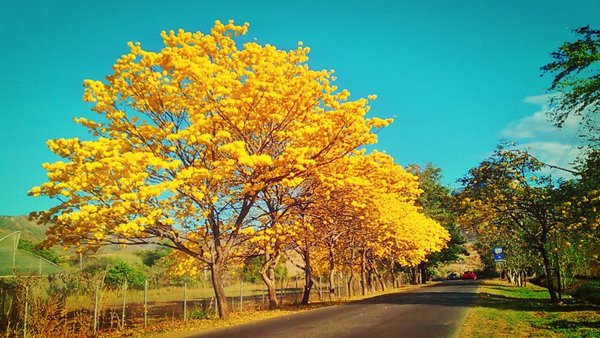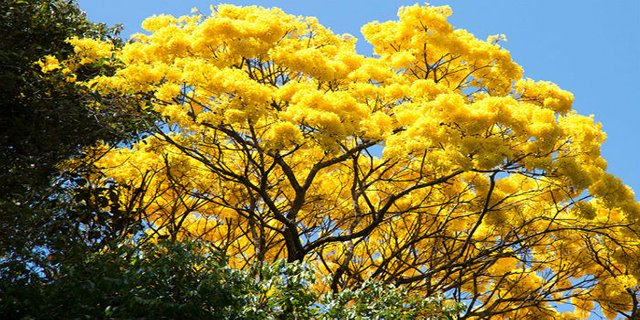Hello steemit this is my presentation Yellow Colorchallenge Wednesday.
The yellow guayacan (Tabebuia Chrysanta), is also known by the names of araguaney, yellow flower, guayacán, zapatillo, zapito, yellow oak, cañahuate and tajibo, it is a tree native to the tropophile jungles of the American intertropical zone.
It is the national tree of Venezuela where, unlike other countries, another species is called guayacán, the Guaiacum officinale, zigofiláceas tree (Zygophyllaceae). It is also known as lapacho amarillo (Argentina, Paraguay) or Ipê (Brazil), guayacán amarillo (Colombia) and
araguaney (Venezuela).
This is a tree that measures up to 35 m tall and can have a diameter of up to 60 cm, it is deciduous (it loses its leaves in drought conditions), scarce and thick ascending branches; straight shaft. The bark is rough from gray to dark brown, has vertical, deep cracks and forms wide plates of dark brown color. Leaves alternate, with 5 leaflets, 5 to 25 cm long and 8 to 20 cm wide. Its bell-shaped flowers (bell shape), large, in groups of inflorescences, 5 to 12 cm long, light yellow, very showy with red lines on the neck. The fruits are cylindrical, narrow capsules, 11 to 35 cm long and 0.6 to 2 cm wide, dehiscent (which opens spontaneously at maturity). Winged seeds, flattened, 1.5 to 2 cm long and 1 cm wide, silver-gray.

It is located in an altitudinal range that goes from sea level to 1000 masl, with annual rainfall of 1500 to 3000 mm and temperatures of 18 to 23 °. It prefers soils of frank texture to sandy loam with good internal and external drainage and a pH of 6 to 8.5. The species is native to Tropical America from Mexico through Central America to Colombia and Venezuela.
The araguaney grows in the tropófilos forests of the
Venezuelan plains, in areas of climate Aw and even BS (intertropical semiarid) according to the climatic classification of Köppen, in the semiarid zones of the north of Venezuela, as well as of other American countries. Its flowering, which leaves a carpet of yellow flowers, as well as its fruiting, occurs during the dry season (from February to April), so that the seeds of the legumes can take advantage of the first rains, although in Ecuador the outcrop occurs at the end of the dry season from the end of October to Decemb

Its wood is considered one of the hardest and heaviest in the Neotropics. It is difficult to brush and cut, durable and very resistant to termites and salt water. It is used in furniture constructions, bodies, floors for industrial use, sleepers, fine crafts. This species has been used in urban arboriculture, decorative living fences, for shade and embellishment of farms. It is an excellent mellifera species.



